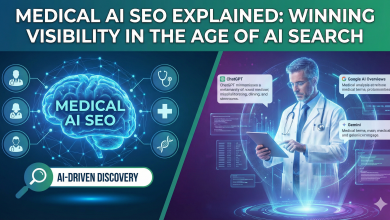
Artificial Intelligence (AI) is reshaping industries across the board, but its impact on clinical research is particularly profound. Traditional trials, which can be rigid, resource-heavy, and location-dependent—are being replaced by smarter, faster, patient-centric approaches powered by AI. As technology accelerates, clinical research must evolve to match both the complexity of modern medicine and the expectations of today’s patients.
AI isn’t a buzzword in this space, it’s a solution. From improving patient recruitment to reducing trial costs and timelines, AI is already influencing the key stages of clinical study design, execution, and evaluation.
Redefining Trial Design with AI Tools
Clinical studies have long followed a fixed, phase-based path—phases I through IV—focused on testing safety, efficacy, and long-term outcomes. AI introduces the flexibility to shift this model. Machine learning enables predictive modeling that forecasts optimal dosage, potential adverse events, and most suitable patient cohorts before a single human subject is enrolled.
Natural Language Processing (NLP) tools can analyze vast troves of unstructured health data—clinical notes, medical records, even anonymized social media discussions—to uncover trends and flag suitable trial candidates. The result is faster recruitment and more precise inclusion criteria. These tools can also help reduce bias in sample populations and increase representation of underrepresented groups.
Where CROs Fit into the AI Equation
Contract Research Organizations (CROs) play a central role in modernizing trial operations. As trials become increasingly decentralized and digitally enabled, CROs are leading the charge in integrating AI across the research lifecycle.
AI-powered platforms enable CROs to monitor patient data in real time, flagging safety signals earlier and reducing protocol deviations. These tools also help CROs automate site selection by matching protocol requirements with site capabilities and past performance. The efficiency gains here directly translate into shorter timelines and lower costs.
Moreover, AI allows CROs to integrate real-world data (RWD) into trials without compromising regulatory standards. This supports hybrid designs where digital and physical data collection coexist, enabling smarter trial management at scale.
From Real-World Data to Real-World Evidence
Wearables, EHRs, apps, and at-home devices are generating enormous volumes of patient data outside clinical settings. The challenge lies in transforming that Real-World Data into actionable Real-World Evidence (RWE). AI makes this transition possible.
Algorithms can sift through noisy, incomplete data sets to extract patterns, validate endpoints, and generate insights that regulators and payers increasingly value. RWE, when backed by strong data integrity, can supplement or even replace traditional data sources for safety evaluations, post-marketing surveillance, and comparative effectiveness research.
To unlock the full potential of RWE, though, the life sciences industry needs standardized data formats and interoperable systems. AI solutions work best when the underlying data is clean, structured, and harmonized, areas where regulatory bodies like the FDA and EMA are beginning to focus their efforts.
Making Trials More Human Through Technology
AI isn’t just making trials more efficient, it’s making them more humane. By enabling remote monitoring and reducing the need for site visits, AI allows participants to stay involved without upending their daily lives. This shift toward decentralization has also made it easier for patients with rare diseases or mobility issues to take part in clinical studies.
Digital platforms now allow researchers to gather Patient-Reported Outcome Measures (PROMs) and Patient-Reported Experience Measures (PREMs) in real time, offering richer insights into how treatments affect lives, not just lab results. These patient-centric data points improve trial relevance and help develop therapies that better reflect real-world needs.
CROs that prioritize patient-centric AI applications are well-positioned to lead this transformation. They are already deploying mobile apps, telemedicine solutions, and wearable integrations that give patients more control while maintaining scientific rigor.
Ethics and Explainability Still Matter
Despite the promise, AI adoption in clinical trials isn’t without friction. Regulatory oversight is evolving, but it hasn’t yet caught up with the complexity of AI models. Explainable AI (xAI) is critical, researchers must understand how and why decisions are made, especially when those decisions affect patient safety.
CROs and sponsors must also address data privacy, especially when pulling sensitive health data from multiple digital sources. Robust encryption, anonymization protocols, and ethical governance are non-negotiable. AI should not replace human oversight, but it can enhance it when used responsibly.
Unlocking the Next Era of Clinical Trials with AI
AI isn’t the future of clinical research, it’s the present. As technologies continue to mature, stakeholders across the life sciences sector must rethink how trials are designed, executed, and evaluated. When used thoughtfully, AI enables trials that are faster, smarter, and more aligned with patient needs.
Those who embrace these tools now, especially CROs that sit at the intersection of technology, patients, and science, will be the ones who shape the next era of medicine.






